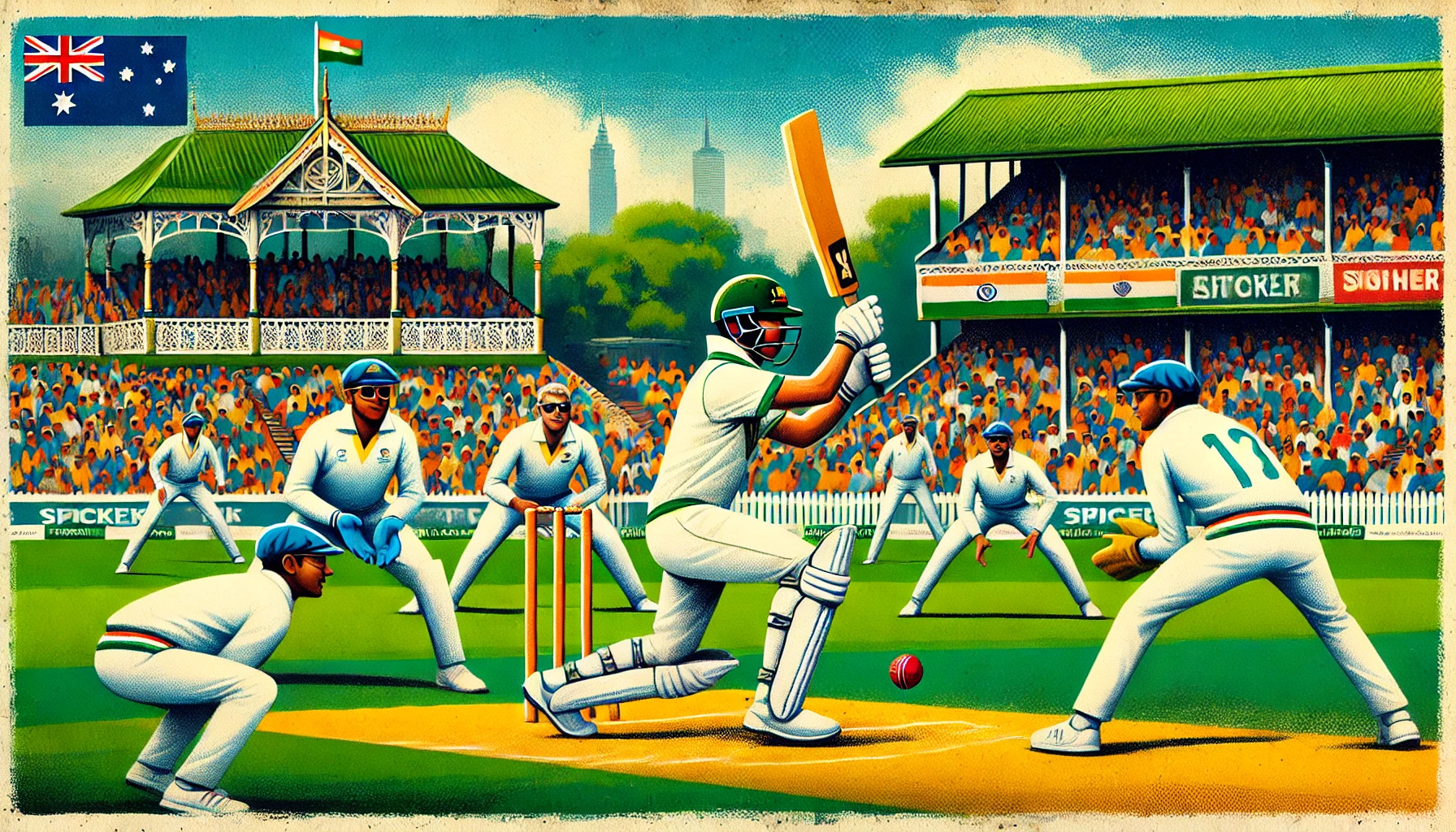
The famous Don Tallon Bar at the Gabba may have closed its doors in 2021, but its spirit floated around the ground yesterday, as Steven Smith and Travis Head batted with the kind of defiance that once fueled animated debates over pots v schooners, and sunlit memories of its patrons.
The bar, named after the Queensland-born wicketkeeping maestro, was a haven for cricket romantics—a place where the game’s stories were passed down like heirlooms, laced with nostalgia and pride. It was the place where grown men wept into their Fourex as each year Queensland once again let the Sheffield Shield slip from its grasp, extending one of sport's greatest losing streaks into another season.
Yesterday’s partnership felt like one of those tales brought to life. Just as the bar had been a sanctuary for fans weathering triumphs and tribulations, Smith and Head became the sanctuary for a reeling Australian side, steadying the ship with a blend of classic resilience and modern flair. Head’s audacious drives and Smith’s methodical stroke-play would have drawn cheers from the bar’s regulars, their camaraderie at the crease reflecting the unity that once thrived in its fishbowl ambience.
Much like so many of those ancient conversations, this innings was about more than runs on the board—it was about heart, about seizing the moment when the odds were steep. The Gabba crowd, though bereft of their beloved bar, found a new story to tell
In the sprawling saga of Test cricket, partnerships often define not just sessions, but the spirit of a team. At the Gabba on a humid Brisbane afternoon, Steven Smith and Travis Head orchestrated a masterclass—a 241-run union that was as much about grit as it was about grandeur. For Australia, reeling at 76/3 against a rampant Jasprit Bumrah-led Indian attack, the duo’s alliance was more than a rescue; it was a declaration of intent.
A Battle Born in Crisis
India had stormed into the morning session with pace and precision, claiming three crucial wickets, including that of Marnus Labuschagne. When Smith walked out, there was an air of familiarity—he has been Australia’s rock in such circumstances. But what followed was a spectacle that transcended mere statistics.
Head, ever the swashbuckler, was defiance personified. His fluent drives and bold hooks took the sting out of India's aggression, neutralizing Bumrah's venom and Siraj's persistence. Smith, on the other hand, crafted a masterpiece of restraint and precision, each run chiselled like a sculptor’s careful stroke. Together, they withstood the tempest, transforming vulnerability into dominance.
For Smith, the ton held profound significance. It was his first in 24 innings—a drought that, for any other batsman, might have been commonplace but for Smith, bordered on a career reckoning. As the ball raced to the boundary off his signature on-drive, the relief on his face was palpable. The celebration was uncharacteristically animated—Smith knew the moment was bigger than the milestone.
His 33rd Test century reaffirmed his place among the pantheon of batting greats, silencing whispers of decline. Yet, beyond personal redemption, Smith’s innings was a captain’s knock in disguise, a moment of leadership without the armband.
While Smith anchored, Head unleashed. His innings, peppered with exquisite cuts and daring lofts, epitomized modern Test batting—bold yet grounded in fundamentals. This was Head's ninth Test century, and like a poet penning his finest lines, he timed each stroke with unerring precision.
For India, his audacity was a nightmare. The bowlers, probing for a mistake, found none; instead, Head’s aggression forced the field to spread, allowing Smith to accumulate unperturbed. By the time Head with 152 against his name, his job was not just done but celebrated, leaving a weary Indian attack bereft of answers.
A Partnership for the Ages
The Smith-Head partnership was not just the fulcrum of Australia's innings but a defining passage of play in the series. It showcased two players at different stages of their careers finding common ground in purpose.
For Australia, it revived hopes of an improbable victory; for Smith, it was a reaffirmation of his greatness; and for Head, it was yet another chapter in his emerging legacy as a match-winner. Together, they reminded the cricketing world of the timeless allure of Test cricket—a game where moments of individual brilliance often find their true meaning in partnerships.
The partnership finally came unglued with the scoreboard reading 316/3 when Smith fell to Bumrah, caught by Sharma for 101. Head was gone a few overs. The damage was done, and for India, the match is likely now beyond its grasp, with the weather set to play an outsized role, and Australia in the box seat at the end of the day on 7 for 405.